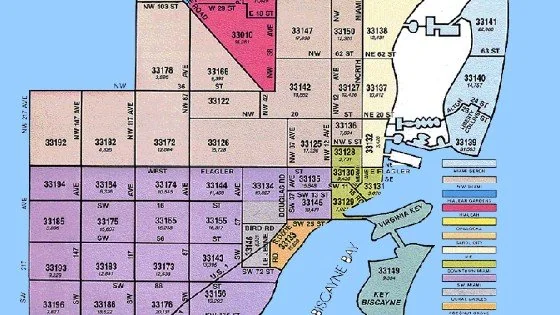How to Properly Maintain an Insulated Air Duct for Maximum Efficiency
An insulated air duct plays a vital role in your home’s energy efficiency. Keeping them in good shape can lead to better airflow and lower energy bills. Regular maintenance ensures that your heating and cooling systems work properly.
Small problems can snowball into bigger issues if ignored. By following a few simple steps, you can maintain your ducts effectively. In this guide, we will outline essential tasks to keep your insulated HVAC ducts efficient.
These steps are easy to follow and can make a significant difference in your home’s comfort and energy use. Let’s get started on improving your duct system.
Regular Inspections
Periodic checks are vital for early problem detection. Inspect your insulated air ducts at least twice a year, ideally before summer and winter when HVAC usage peaks.
Look for visible damage like tears, cracks, or gaps in the insulation. Check for signs of moisture, mold, or pest infestations. These issues can compromise the insulation’s effectiveness and air quality.
Use a flashlight to examine hard-to-reach areas. If you’re unsure about what to look for, consider hiring a professional HVAC technician for a thorough inspection.
Proper Cleaning
Clean air ducts contribute to better air quality and system efficiency. It is recommended to clean air ducts when there’s visible mold growth, vermin infestation, or excessive dust and debris.
Start by removing and cleaning vent covers. Use a vacuum with a long hose attachment to remove loose dust and debris from the ducts. For a deeper clean, use a soft-bristled brush to dislodge stubborn dirt.
Avoid using water or chemical cleaners inside the ducts, as this can damage the insulation. If you suspect mold or severe contamination, consult an expert air duct cleaning service.
Sealing Leaks
Even small leaks can significantly reduce your HVAC system’s efficiency. A typical house with central air conditioning can lose a certain percentage of the air moving through the duct system due to leaks and poorly connected ducts.
Inspect all joints and seams in your ductwork for gaps or disconnections. Use mastic sealant or metal tape (not duct tape) to seal any leaks you find. Pay special attention to areas where ducts connect to vents, as these are common leak points.
For larger gaps or disconnected sections, you may need to replace a section of ductwork. This is often best left to professionals to ensure proper fit and sealing.
Insulation Repair and Replacement
Damaged or degraded insulation can’t effectively regulate temperature, leading to energy waste. If you notice any tears, compression, or missing sections in your duct insulation, address these promptly.
For small tears, use foil tape designed for duct insulation to patch the area. For larger damaged areas or sections where insulation is missing, you’ll need to replace the insulation.
When replacing insulation, choose a product with the appropriate R-value for your climate and duct location. The higher the R-value, the better the insulation’s effectiveness. In most cases, an R-value of 6 to 8 is sufficient for duct insulation.
Maintaining Proper Airflow
Restricted airflow forces your HVAC system to work harder, reducing efficiency. Ensure all vents and registers in your home are open and unobstructed by furniture or other objects.
Check the air filter in your HVAC system monthly and replace it as needed, typically every 1-3 months. A clean filter helps maintain proper airflow and prevents dust and debris from accumulating in your ductwork.
Consider having your ducts professionally balanced. This process ensures that the right amount of air is flowing to each room, optimizing comfort and efficiency.
Addressing Moisture Issues
Moisture in your ductwork can lead to mold growth and insulation damage. It’s crucial to identify and address the source of any moisture problems promptly.
Check for condensation on the outside of your ducts, particularly in unconditioned spaces like attics or crawl spaces. If you notice condensation, you may need to add or improve the insulation in these areas.
Ensure your home’s humidity levels are properly controlled. The EPA recommends keeping indoor humidity between 30% and 50%. Use dehumidifiers in damp areas if necessary.
If you find standing water or signs of water damage in your ductwork, consult a professional immediately. This could indicate a more serious issue, such as a leak in your roof or plumbing system.
Checking and Upgrading Duct Design
To make sure your home stays cozy and energy-efficient, it’s important to have a well-designed duct system. If you notice some rooms are too hot or too cold, or if your energy bills are higher than usual, it might be a good idea to check your duct layout. Take a look at how your ducts are set up and watch out for any unnecessary twists, turns, or long stretches that could be slowing down airflow.
These obstacles can cause uneven temperatures and make your energy use go up. By upgrading to a better duct design, you can make your system work better and keep your home comfortable.
To get personalized advice and improve your setup, talk to an HVAC expert. They can recommend changes that will boost efficiency and keep every room feeling just right, no matter the season.
Professional Maintenance
You can take steps to care for your air ducts, but professional maintenance is key. An HVAC technician does more than clean. They check for wear, leaks, or blockages that reduce efficiency.
Moreover, they use special methods to clean hard-to-reach areas. Aim for professional checks at least once a year, ideally before summer or winter. These seasons strain your systems the most. This prep helps catch issues early and avoids costly repairs.
Ensure a Properly Maintained Insulated Air Duct for Maximum Efficiency
In conclusion, keep your insulated air duct well-maintained for optimal HVAC efficiency and home comfort. Regular checks, cleaning, sealing leaks, and managing moisture are crucial.
Also, get a professional annual check-up to ensure energy-efficient ductwork. Upgrading duct design can boost airflow and performance.
These steps will improve air quality. They’ll ensure a healthier home and extend your HVAC system’s life.
If you found this article enjoyable, we encourage you to explore our blog for more engaging content!





